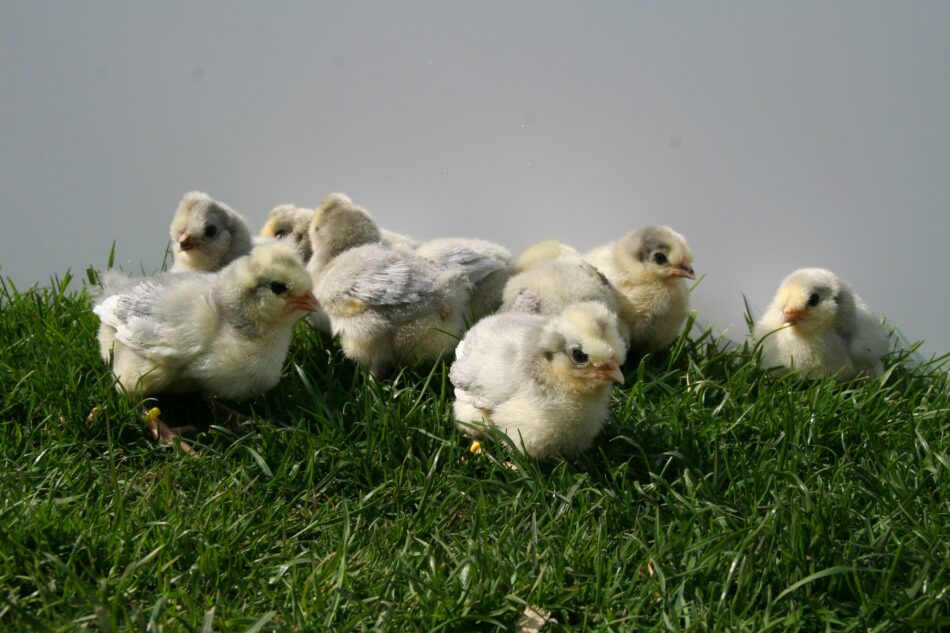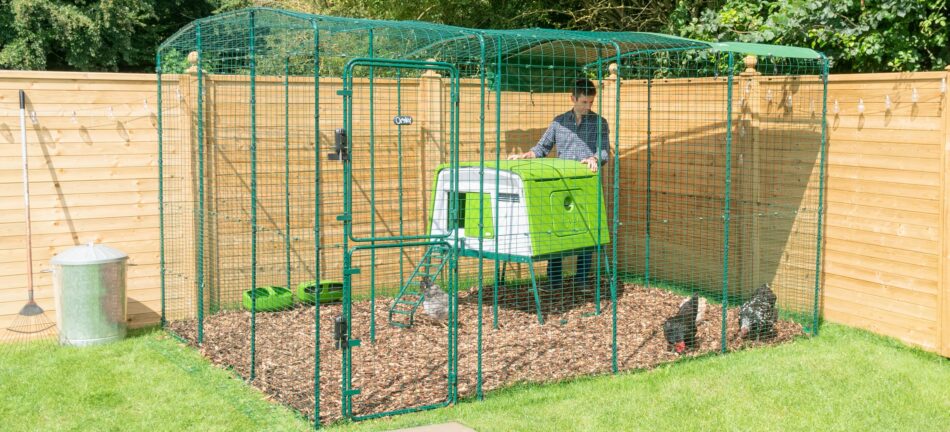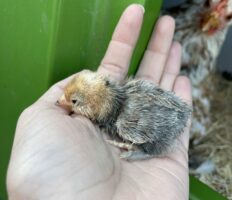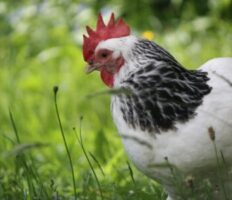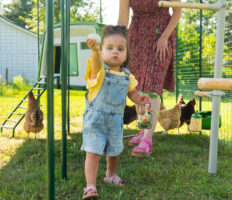Keeping chicks safe from predators
Worried about keeping chicks safe from predators? It’s a valid concern – chicks are more vulnerable to attacks from predators than full-grown hens, and they’re more naive to the wily ways of these skillful hunters. Thankfully, we’ve designed solutions to keep chicks safe from harm. Discover which predators pose the highest risk to young chicks, and see how Omlet can help keep even your smallest flock members safe.
Why are chicks a target for predators?
Chicks are an easy target for predators because of their size and lack of experience with other animals. While chickens are all born with an innate sense of danger, chicks learn a lot through experience or from example with a mother hen. Chicks raised in a brooder being handled by humans daily don’t have this learning opportunity.
You’ll notice most (if not all) chicks will be skittish of things that move quickly or make a sudden noise, like your hand or if you clear your throat. They’ll startle or scatter at the sight of a pet dog or cat, or may even be alarmed at your sudden presence over the brooder pen. These are all normal behaviors for a chick, which, unfortunately, are well-recognized by skilled predators. They’ll bide their time and are well practiced in moving in a stealthy manner to surprise their unsuspecting prey.
When can chicks move outside?
You can start moving your chicks outside once they are fully feathered, which usually occurs between 6-8 weeks of age for most breeds. Once they’ve reached this milestone, you can begin taking them outside for supervised stints to explore their coop and run. Choose warm, sunny days so that they don’t get chilled, and make sure you can stay with them for the entirety of their excursion.
It’s important to keep your chicks close by and in a fully enclosed area during their visits to the great outdoors. Predators will gladly take advantage of exposed or unprotected chicks. Chicks will draw attention from predators easily, as they will be excitedly pecking, hopping, and scratching around in their new environment. Because of this, it’s vital to make sure they are fully protected while outside.
Once chicks are 12 weeks old, they can move into their Omlet chicken coop full-time. This recommendation is based not only on a chick’s development, but also to ensure they are large enough to navigate the ladder of raised coops, or to be comfortable with heading in to roost on time.
5 chick predators
While any chicken predator can pose a risk to your chicks, there are some that are more apt to go after your small flock members because of their size. Similarly, the predators that would make a quick meal of a chick can also pose a threat to full-grown hens. But to help you better prepare your setup for your new flock members, we’ve compiled a list of predators that are likely to pose the most risk to your chicks in particular.
Rats
Rats may be small, but a young chick is no match for them. While they are normally scavengers, rats are also opportunistic eaters and won’t hesitate to go after a live chick if they’re hungry. One swift bite from a rat can spell the end for a chick.
The best way to keep rats away from your chicken coop is to make sure there is no food left out in the run overnight. Collect any uneaten chick food each evening and keep all feed in airtight containers. You can also offer treats in a Caddi Chicken Treat Holder and offer scratch grains in a chicken peck toy to prevent waste and keep the floor of the run clean.
Raccoons
Raccoons are notorious for reaching through the openings in runs to grab poultry. Their attacks are calculated and macabre – raccoons may only take the heads of their prey, leaving the rest of the carcass in the run. But, if chicks are small enough to fit through the openings, a raccoon will take their prey and leave no trace of their visit.
To keep chickens safe from raccoons, the attached run of the Eglu Cube has a tighter mesh pattern along the bottom of the run, that slowly graduates to larger openings as the mesh ascends. The doors are also fitted with t-locking handles that require opposable thumbs to open. This prevents raccoons from using their paws to grab chicks through the run, or turn the handles of the coop doors.
Snakes
Similar to raccoons, snakes will take advantage of small gaps or openings in chicken pens. One of the most common and troublesome reptiles that go after chicks are rat snakes – also aptly called “chicken snakes.” These non-venomous snakes can grow to be 42-72 inches in length, and use the method of constriction to immobilize their prey. While they prefer rodents or chicken eggs, they will happily constrict and swallow chicks.
As a general rule, snakes can get through any opening that their head fits in. To protect your chicks from snakes, you must have openings less than ½ inch along the bottom 4 feet of the run. And, if your run is around any shrubs or trees you’ll need this protection along the top as well – rat snakes are avid climbers and can get the drop on your coop. Chicken run covers can be used along with hardware cloth to help keep snakes out of the run.
Birds of prey
Birds of prey like hawks, eagles, or owls, primarily pose a risk of aerial attacks. These birds will swoop down and grab any small animal they think they can pick up. Some large birds have even been known to attack through the sides of a run much like a raccoon – grabbing any nearby chicks and pulling them through the opening.
The attached run of the Eglu Cube has a fully enclosed top to prevent attacks from above, and the tight mesh along the bottom protects your chicks from side-swiping efforts. Keep your chicks’ feed in airtight containers, and their feeders and waterers out of sight from birds of prey to not draw unwanted attention.
Domestic dogs and cats
Sometimes the biggest threat to your chicks can be a member of your own family. Dogs and cats can accidentally hurt chicks, or intentionally go after them if they have a high prey drive. Even calm dogs and cats can become easily excitable when they hear or see chicks in their backyard.
Keep your dog on a leash when introducing them to your chicks for the first time, and always through the safety of a sturdy barrier like the attached run of the Eglu Cube. Cats should also be monitored closely when they’re introduced to your chicks.
Keeping chicks safe
You’ve spent weeks taking care of your chicks in a brooder, so it’s only natural to be apprehensive when you first move them outside. From their first moments in their outdoor setup, you’ll want them to be as safe as possible.
By connecting a walk in chicken run to your Eglu Cube, your chicks will have plenty of protected space to explore and play in their new surroundings. And, just like the attached chicken runs of our chicken coops, the walk in chicken run features anti-dig skirting to prevent predators from tunneling in.
To add even more security to your Eglu Cube, an Automatic Chicken Coop Door can be integrated seamlessly for not just an automated schedule, but an extra layer of security. The horizontal opening mechanism makes it extremely difficult for predators to pry open, and your chicks will be tucked in safely each night on time – with or without you being there.
Omlet and keeping your flock safe
Omlet’s products have been designed with security at the forefront. Whether you have an existing flock that you’re adding chicks to or are getting chicks to begin your chicken-keeping journey, our products will keep them safe. The walk in chicken run, Autodoor, and Eglu Cube have all been designed to keep flocks of all stages and ages protected for a lifetime. When you choose an Omlet setup to house your chicks, it will be the only one you ever need.
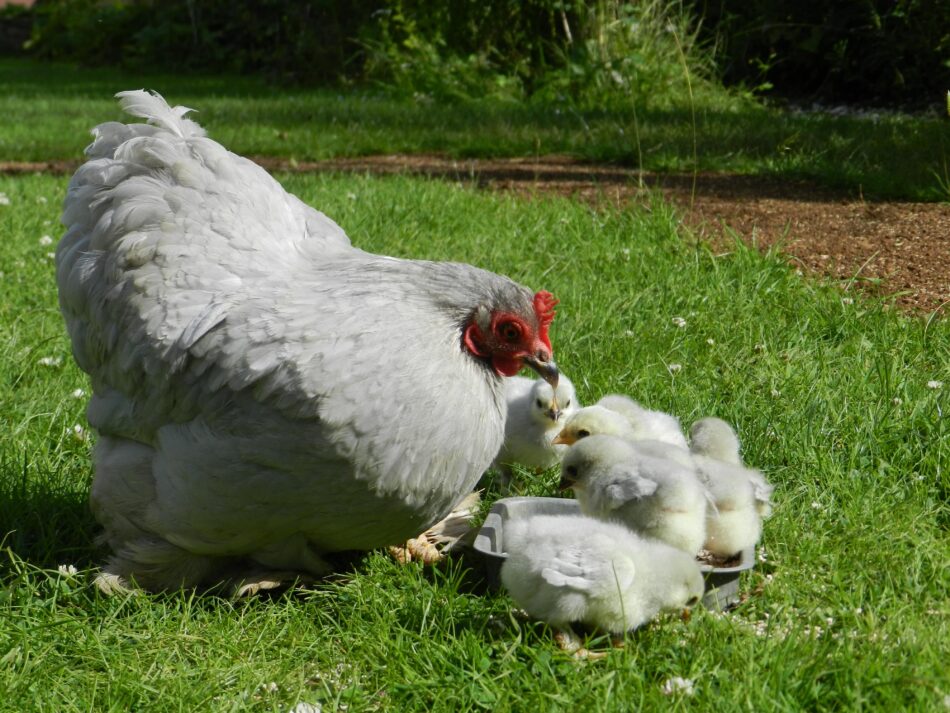
This entry was posted in Chickens
